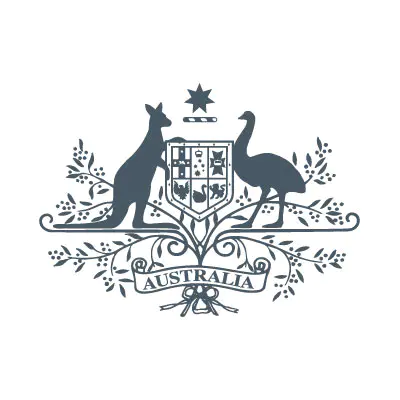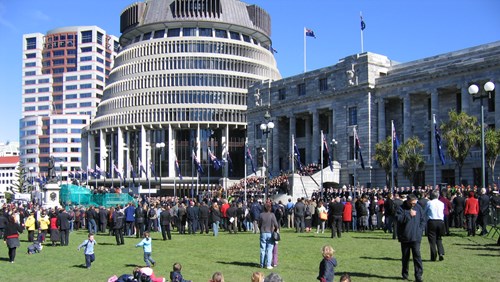
Southeast Asia economic strategy to 2040
When Australia became ASEAN’s first Dialogue Partner in 1974, my predecessor Prime Minister Gough Whitlam described ASEAN as “unquestionably the most important, [and] the most relevant” group in our region.
Half a century later, Australia and Southeast Asia have both changed profoundly.
We are both more diverse – and we are more engaged.
Our economies are more open, more modern – and more connected.
Our prosperity and security and stability more intertwined.
We face environmental challenges, economic uncertainty and strategic competition on a level of complexity that could not have been imagined 49 years ago.
And yet for all that has changed, a defining truth endures.
The centrality of ASEAN is vital to Australia’s future.
Because Australia and ASEAN are bound by more than an accident of geography or the virtue of history – we share a common belief in the opportunities of this region, the potential of our peoples.
And we hold a common responsibility to advance stability, peace and prosperity for every nation that calls Southeast Asia home.
To recognise the sovereignty of every country and the inherent dignity of every individual.
To ensure this is a region where each of us can shape our own destiny and secure our own future.
I am here today to affirm Australia’s belief in the power and value of ASEAN centrality.
And to match those words with deeds.
Today I announce our Government’s strategy for the most significant upgrade of Australia’s economic engagement with ASEAN for a generation.
An overdue strengthening of our engagement to reflect the speed of the transformation underway – and the scale of the opportunities ahead.
The strategy we outline today reflects an enduring truth: this is where Australia’s economic destiny lies.
And this is where our shared prosperity can be built.
This is where, working together, the peace, stability and security of this region – and the Indo-Pacific – can be assured.
The framework we are outlining today charts a course to 2040.
By which time, ASEAN’s combined economy is expected to be the 4th largest in the world.
We are building on a strong foundation.
In 2022, ASEAN accounted for nearly 15 per cent of Australia’s overall trade — greater than our two-way trade with Japan or the US.
But Australia’s economic engagement with the region has not kept pace with the growth of Southeast Asian economies.
Australia should be a larger trade and investment partner for Southeast Asia.
The ambitious plan we are sharing today takes us beyond catching-up, it positions us for what’s ahead.
Throughout 2023, Australia’s Special Envoy to Southeast Asia, Nicholas Moore, has travelled up and down the region, visiting every ASEAN nation besides Myanmar.
He’s had hundreds of conversations.
Absorbed hundreds of written submissions.
Today I am launching Nicholas’ report, Invested: Australia’s Southeast Asia Economic Strategy to 2040.
Mr Moore has identified four key priorities:
- Raising awareness – strengthening understanding of markets, sectors and emerging trends;
- Removing blockages – addressing barriers to trade and investment;
- Building capability – ensuring Australia and the region have the skills and knowledge to work effectively together;
- And deepening investment – supporting Australian investors to identify, develop and finalise prospective deals in the region.
He’s also identified a number of key sectors which offer the greatest potential for growth, including:
- Agriculture and food
- Energy security and the clean energy transition
- Infrastructure
- And education and skills.
Australia brings a lot to the table in expertise, goods, services and capital.
We are a provider of first-class services, particularly in health and education.
Our fast-growing tech sector is one of the largest in the southern hemisphere.
We are a reliable, high-quality supplier of commodities, including in agriculture, minerals and energy.
We are ready to use our strength in critical minerals – as well as abundant sun and wind resources – to support a secure and stable energy transition for the region.
There are significant opportunities for our businesses in Southeast Asia’s fast-growing economies, including in infrastructure and the clean energy transition.
We will also benefit from further Southeast Asian investment and exports, which are already making a notable contribution to the Australian economy.
The foundations are there, too.
Businesses across the region are already engaging.
We’ve got Australian tech company, Powerledger, partnering with Thai solar providers to trial rooftop solar energy trading between apartment blocks in Bangkok.
There’s the Malaysian engineering company, Gamuda, working with the New South Wales Government to build the Sydney Metro West.
There’s Australian company, Aurecon, providing engineering and design services for exciting infrastructure and energy projects in Vietnam.
And Indonesia’s cutting-edge technology company Bukalapak, which collaborated with the Victorian Government to open its first international technology hub in Melbourne in 2022.
Just a few examples among many.
It’s the same story with trade.
Leading Australian company Cochlear has transformed the lives of over 9,000 people in Southeast Asia through distribution of its sophisticated hearing implants.
If you’re lucky enough to be served a quintessential Australian lamington, the coconut is likely to hail from the Philippines.
Our economies and our cultures are already so intertwined — in ways big and small.
But what Nicholas kept hearing during his consultations was that both sides can do more.
Australia is ambitious for what we can achieve with the region to tackle the challenge of climate change, for example.
And we recognise that it’s in all our interests to support the net zero transition.
Greater trade diversification, including through supply chains, is also in the region’s and Australia’s mutual interests.
There’s so much potential still untapped.
My government will respond to all the findings of this comprehensive report in due course.
But there are some we’re acting on right away.
Today I announce we will commit $95.4 million to support three initiatives that go to the heart of the strategy’s priorities.
We’ll form new Deal Teams, based in Southeast Asia and drawing on public and private sector expertise, to identify opportunities for Australian investors and support projects through to finalisation.
These teams will develop a pipeline of investment-ready projects and advise Australian investors on matters from regulatory approvals to finding local commercial partners.
We’ll also embark on a new Southeast Asia Business Exchange Program to boost two-way trade.
This will improve awareness of trade opportunities both in Australia and in Southeast Asia.
And we’ll set up an exchange program for young professionals, building enduring links between Australian and Southeast Asian businesses.
This will see talented young people from Australia gain experience working in Southeast Asian companies, as well as Southeast Asian professionals gaining experience in Australian businesses.
I look forward to getting these up and running.
Deepening our engagement with Southeast Asia is a priority for Australia.
But as I’ve said today, it’s also an opportunity for the whole region. In the years ahead, all of us will benefit from the security we build together.
The prosperity we create together.
The stability we preserve together.
The sovereignty we respect together.
The environmental commitments we fulfil together.
The energy transition we drive together.
We can make ASEAN’s next half-century even more successful than the last.
And we can share that success, together.


